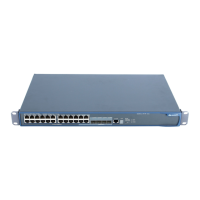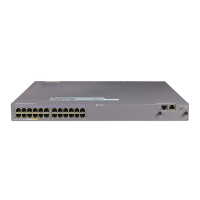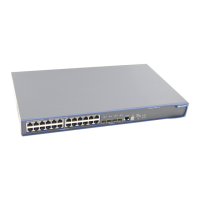Operation Manual - DHCP
Quidway S5600 Series Ethernet Switches-Release 1510 Chapter 3
DHCP Relay Configuration
Huawei Technologies Proprietary
3-7
II. Configuring DHCP relay handshake
When the DHCP client obtains an IP address from the DHCP server through the
DHCP relay, the DHCP relay records the binding relationship of the IP address and the
MAC address. After the DHCP relay function is enabled, the DHCP relay sends the
handshake packet (the DHCP-REQUEST packet) periodically to the DHCP server
according to the IP address and its MAC address, which are specified in the binding
relationship.
z If the DHCP server returns the DHCP-ACK packet, it indicates that the IP address
can be assigned. The DHCP relay ages the corresponding entry in the user
address table.
z If the DHCP server returns the DHCP-NAK packet, it indicates that the lease of
the IP address is not expired. The DHCP relay does not age the corresponding
entry.
After the DHCP relay function is disabled, the DHCP relay does not send the
handshake packet (the DHCP-REQUEST packet) periodically to the DHCP server.
z When the DHCP client releases this IP address, the client unicasts the
DHCP-RELEASE packet to the DHCP server.
z The DHCP relay does not process this packet, so the user address entries of the
DHCP relay cannot be updated in real time.
Table 3-5 Enable/disable DHCP relay handshake
Operation Command Description
Enter system view
system-view
—
Enable DHCP relay
handshake
dhcp relay hand enable
Disable DHCP relay
handshake
dhcp relay hand
disable
By default, the DHCP relay
function is enabled
III. Configuring the dynamic user address entry updating function
When a DHCP client obtains an IP address from a DHCP server with the help of a
DHCP relay, the DHCP relay creates an entry (dynamic entry) in the user address
table to track the binding information about the IP address and MAC address of the
DHCP client. But as a DHCP relay does not process DHCP-RELEASE packets, which
are sent to DHCP servers by DHCP clients through unicast when the DHCP clients
release IP addresses, the user address entries maintained by the DHCP cannot be
updated in time. The dynamic user address entry updating function is developed to
resolve this problem.

